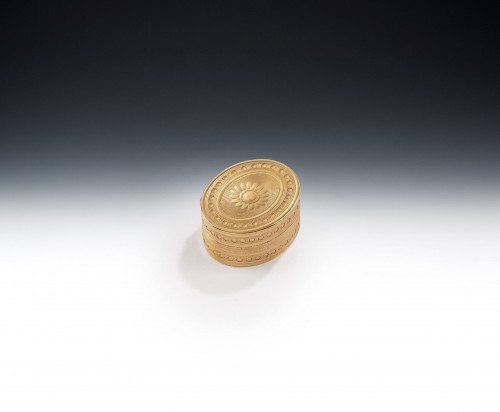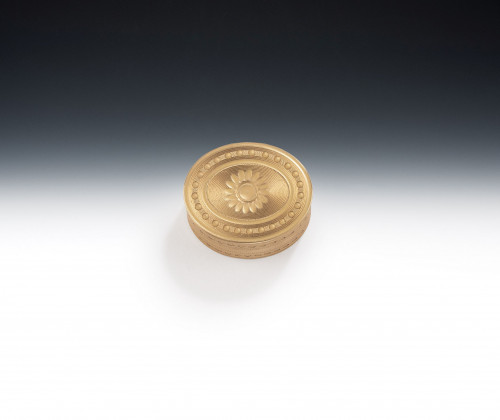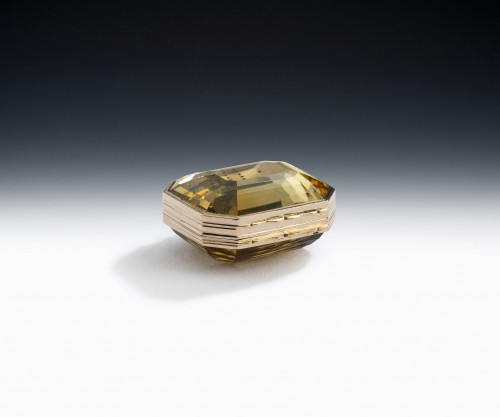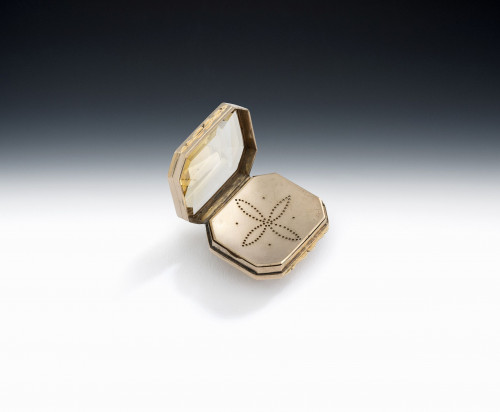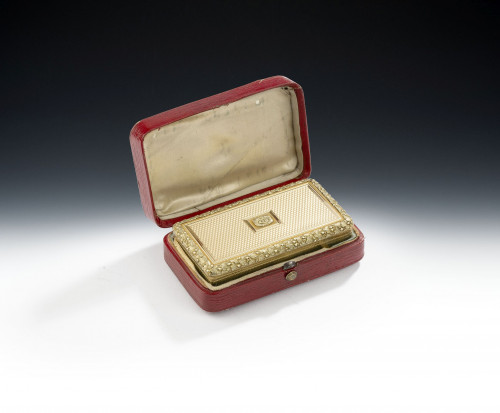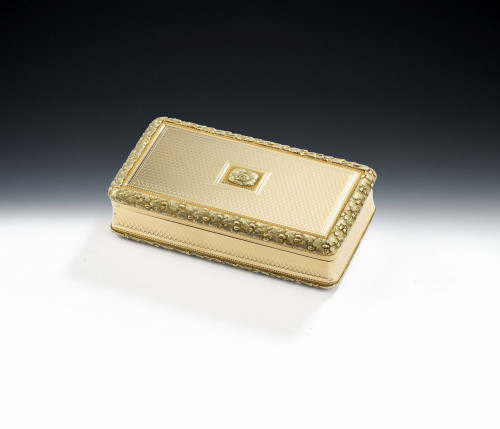- Home
- Gold Boxes & Objet D'Art
- THE AESTHETIC MOVEMENT. A very rare and exceptionally fine silver and two colour gold Card Case made in Birmingham in 1885 by George Unite.
THE AESTHETIC MOVEMENT. A very rare and exceptionally fine silver and two colour gold Card Case made in Birmingham in 1885 by George Unite.
THE AESTHETIC MOVEMENT. A very rare and exceptionally fine silver and two colour gold Card Case made in Birmingham in 1885 by George Unite.
374332
The card case is of broad rectangular form with serpentine shaped sides and a hinged cover. The sides are beautifully decorated with exotic birds, oriental floral sprays, bamboo and a snail, in addition to unusual stylised floral patterns within a circular frame. The decoration is inset in two colours of gold on a matted silver surface. The card case is in exceptionally crisp condition and is contained within its original leather, silk and velvet lined case. The case is very well marked and is a rare survivor from this movement.
"Art for Art's sake", a phrase coined by Theophile Gautier in 1835, became the slogan for the Aesthetic movement - a movement that set forth to promote the cult of pure beauty in the arts.
In the middle of the 19th century, fine art was heavy with historicism, sentimentality and morality - the archetypal Victorian style that we think of today. With the rampant spread of industrialisation and materialism in the second half of the century, there was a movement among a group of liberal artists, philospohers, poets and designers to rid art of deeper historical meaning or moralising and celebrate visual beauty - literally promoting art for art's sake. Furthermore, these free thinkers hoped to spread art and beauty into everyday life, to make it available to the masses and not just the elite.
Beginning in Fine Art with the like of Dante Gabriel Rosetti, Edward Burne-Jones and George Frederick Watts, the Aesthetic Movement was dream like, wistful, full of vivid jewel like colours and embellished with rich textural details. Inspiration was drawn from the Middle East and particularly Japan, from where trade routes had opened after 1850.
Soon the movement spread into design and the decorative arts, with the likes of Christopher Dresser and Edward William Godwin producing furniture, textiles, wallpaper, ceramics and more. Of all the domestic artistic movements of the late 19th and early 20th century, it was the first to be commercially successful, epitomised by the vast array of furnishing available in Liberty's in London. No branch of the arts was exempt and silver, too, saw designers apply the principles of the movement to their wares. Aesthetic Movement silver is focussed on decorative surface detail. The overall shape of pieces was borrowed from an earlier stylistic era, but these forms were now covered in a riot of flowers, plants and birds, with decorative elements from Japan coming to the fore.
Length: 3.9 inches, 9.75 cm.
Width: 2.75 inches, 6.88 cm.
Thank you for your enquiry.
We will get back to you soon.
Please create wishlist to add this item to
RELATED ITEMS


A very rare silver gilt cased miniature folding knife made in London in 1896 by Francis Higgins
£695







